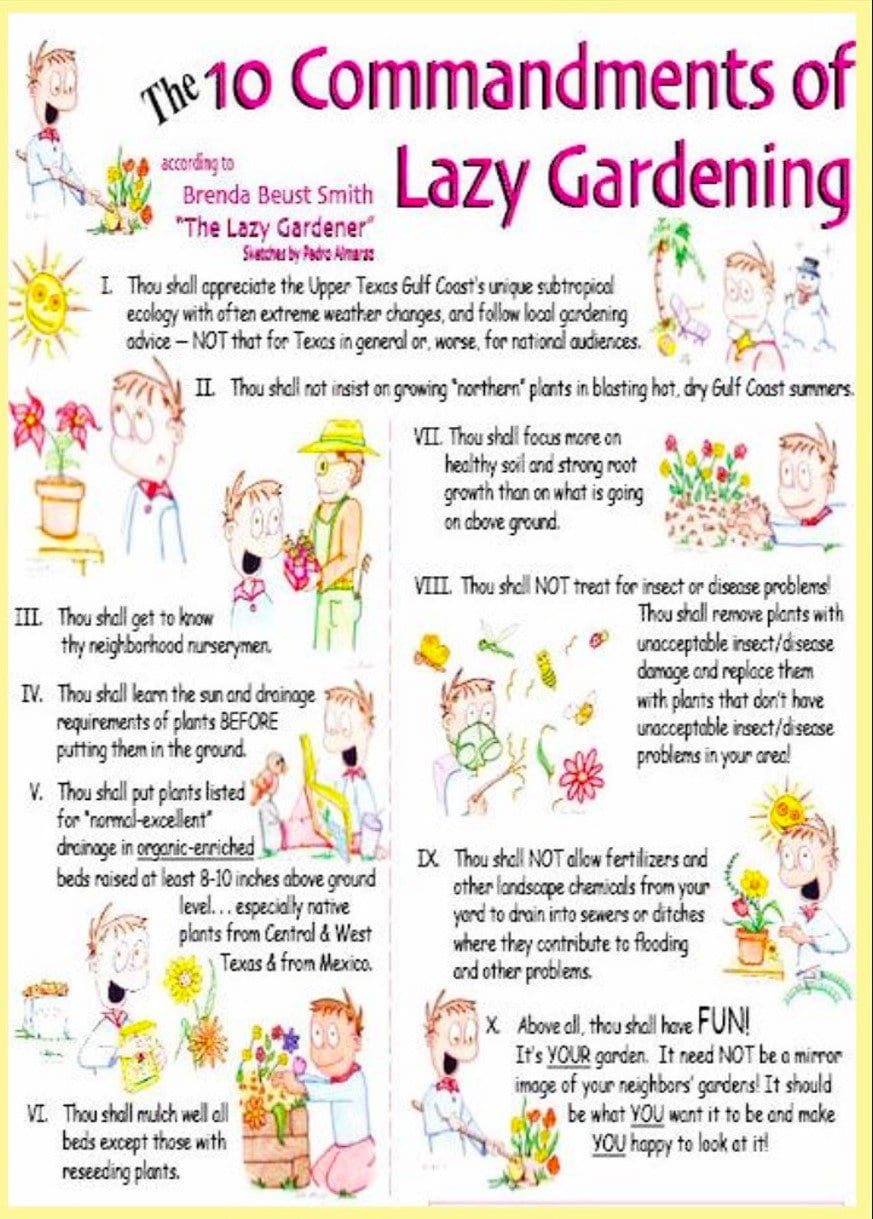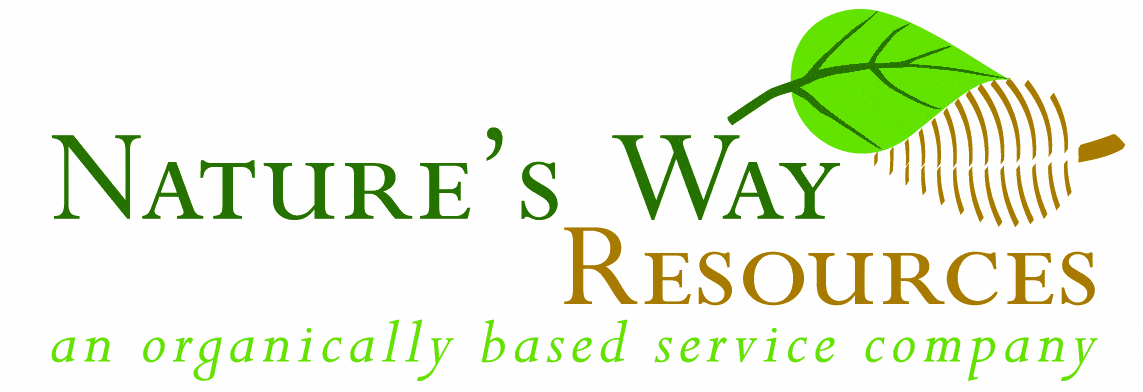 Nature’s Way Resources is proud to produce & email you this free weekly newsletter. We have no ads, but sponsors do graciously help support this project as a public service. Please note their names below & show your gratitude for this free service by patronizing their businesses! To become a sponsor, call (936) 273-1200
Nature’s Way Resources is proud to produce & email you this free weekly newsletter. We have no ads, but sponsors do graciously help support this project as a public service. Please note their names below & show your gratitude for this free service by patronizing their businesses! To become a sponsor, call (936) 273-1200
Nature’s Way Resources owner John Ferguson, “The Lazy Gardener” Brenda Beust Smith and Pablo Hernandez welcome your feedback and are so grateful to the many horticulturists who contribute their expertise
Click here to join our email list
CLICK HERE for PDFs OF PAST LG&F NEWSLETTERS
“Money can’t buy happiness. But it can buy plants, AND THAT’S THE SAME THING!”
— unknown
By BRENDA BEUST SMITH

SEEDS VS. PLANTS? Why, newcomers from “up nawth” often wonder why we don’t use seeds more often than we do? Why do we opt more often for starter plants?
Louise wrote that, since moving to Houston from New Jersey, she used started plants because her neighbors did. In New Jersey, she had used mainly seeds. Now that she’s retired, she wants to get back into seeds. Why, she writes, are starter plants used mostly down here? What are the advantages and disadvantages of each approach?
Seeds are inexpensive and a lot of fun, especially for children. But do your research. Many seeds require a slow germination period to reach full potential. Our soil heats up so quickly in spring, some seeds germinate too quickly.
Good example, wildflower seeds are usually planted in Spring farther north. We have to sow many wildflowers in late Fall to give them enough prolonged cold germination time — just as we do bulbs like daffodils, tulips & hyacinths, to give them more “growing time” before our hot weather hits. Now that our weather’s so unpredicatable, that might change. Who knows?
Locally-owned nurseries are FAR more likely to take all of this above into consideration than will box stores or online seed ordering sites. Already-started varieties at local independent nurseries will most likely been grown by local area growers who know well our subtropical pocket benefits and challenges.
Back to seeds vs plants: Don’t let all uncertainty stop you from experimenting! Our climate is changing so much, success rates are almost impossible to predict. One good source: neighbors’ gardens. Ask about plants you really like and see how they were started.
Seeds are inexpensive and great fun. You might google the name of the plant and “Houston garden” to see what local writers have said about when and where to plant specific ones. Or, just give it a try, keeping in mind Nature always bats last!

L to r: Ajuga ‘Pink Lightning’ (Ajuga reptans); Flowering quince (Chaenomeles lagenaria); Heartleaf skullcap (Scutelaria ovata); Powis castle artemisia (Artemisia arborescens x absinthium); and Soapwort (Saponaria officinalis)
HERBS ARE TOUGH PLANTS!
By MARYANN READAL
TEXAS THYME UNIT HERB SOCIETY OF AMERICA
texasthymeunit.org
|
Many herbs growing in our USDA Zone 9A gardens survived this winter’s three-day hard freeze unprotected. The freeze also did not affect the budding new growth of perennial herbs like anise hyssop, bee balm, salvia, and chrysanthemum, which were already beginning to come back at their roots before the freeze. Onion chives and garlic chives were droopy after the freeze but quickly recovered, sending up new, bright green shoots. Here are some freeze-resistant herbs to consider planting in your garden this year:
Among the other herbs that sailed through our recent freezing temperatures and remained green were bay laurel, calendula, catmint, culinary sage, dandelion, dianthus, dill, elderberry, fennel, goldenrod, lambs quarters, lavender, lyre leaf sage, mealy blue sage, mints, mullein, parsley, penstemon, plantain, oregano, rosemary, salvia greggii, thyme, violets, winter savory, and yarrow which is the International Herb Association’s 2024 Herb of the Year. All of these tough survivors make a convincing case for planting not only for culinary and landscape purposes but also for the beauty and life they give your garden in the winter and for the food and shelter they provide for pollinators all year long. |

NEWS FROM THE WONDERFUL WORLD OF SOIL AND PLANTS # 274
Subject: Biocontrol Stratification, Compost and Clay, DNA Damage and Glyphosate, Chemicals and Bad Health.
An article in the journal HortScience (2022) found that root rot in Boxwoods, which is caused by a pathogenic fungus called Phytophora nicotianae, could be effectively controlled by the fungi Trichoderma harzianum and Trichoderma virens.
These good fungi will colonize plant roots and help protect them. These good fungi require highly organic slightly acidic soil for best results. These beneficial fungi are found in leaf mold compost if it is made correctly. Additionally, there are many brands of biological control products that have these good fungi in them.
Since they work best in acidic conditions, over watering with chemical treated municipal water, that is often alkaline, may kill off these beneficial microbes.
There is a new technique of weed control being studied for use in containers. Researchers found that by using substrate stratification with different materials or different physical properties in a container, it reduced water requirements and weed growth of several species of weeds.
The weed reduction effect of this layering can be improved by mixing the fertilizer into the lower substrate, and not using any fertilizer in the top 2–3-inch layer. Journal HortTechnology (2022)
I have been using a version of this technique for years with very good results. I apply 2-3 inches of aged native mulch in the bottom to encourage aeration, drainage and attract earthworms. Next, I always mix in some Microlife organic fertilizer and re-mineralizer into my soil mix which is added to the container on top of the mulch in the bottom. Then I apply a couple inches of Aged Native Mulch to the top of the soil layer and around the plant.
Another study in the Journal HortTechnology (2022) I found to be somewhat humorous. The researchers found that plants grow and establish faster in clay soils when they are amended with compost.
I expect any serious gardener in the last 100 years or so could have told them that.
A new report by the National Institute of Health (2023) found that there was DNA damage to men spraying Roundup and other glyphosate-based herbicides. The DNA damage was in chromosomes that are associated with blood cancers (lymphoma, myeloma, and leukemia) as well as Alzheimer’s disease.
Another study by College of Public Health at George Mason University (2023) found a strong association between insecticide exposure and lower sperm concentrations in men globally.
They did a meta-analysis of 185 studies of 45,000 health men over the last 50 years and found Western men have experienced a 50% reduction in sperm counts over the past 40 years.
Additional research results are described in a book by the researchers called “COUNTDOWN”. They found “environmental chemicals may be blurring gender and affecting sexual preference,” women were also effected as were babies by these chemicals.
Count Down: How Our Modern World Is Threatening Sperm Counts, Altering Male and Female Reproductive Development, and Imperiling the Future of the Human Race by Shanna H. Swan and Stacey Colino
The reasons to only use organic methods in our lawns and gardens, and eat only organic foods continue to increase.
A marketing study in the Journal of Environmental Horticulture (2023), found that people with more environmental knowledge are more likely to purchase Native plants.
SPONSORSHIP
If you are interested in becoming a sponsor, please contact us at 936-273-1200 or send an e-mail to: lazygardenerandfriends@gmail.com
ABOUT US
BRENDA BEUST SMITH WE KNOW HER BEST AS THE LAZY GARDENER . . . but Brenda Beust Smith is also:
- a national award-winning writer & editor
- a nationally-published writer & photographer
- a national horticultural speaker
- a former Houston Chronicle reporter
When the Chronicle discontinued Brenda’s 45-year-old Lazy Gardener” print column — started in the early ’70s as a fun side-project to reporting, it then ranked as the longestrunning, continuously-published local newspaper column in the Greater Houston area. The name, she says, is not just fun, it’s true. Brenda’s gradual sideways step from reporter into gardening writing led first to an 18-year series of when-to-do-what Lazy Gardener Calendars, then to her Lazy Gardener’s Guide book which morphed into her Lazy Gardener’s Guide on CD, which she now emails free upon request. Brenda became a Harris County Master Gardener and, over the years, served on theboards of many Greater Houston area horticulture organizations. She hosted local radio and TV shows, most notably a 10+-year Lazy Gardener specialty shows on HoustonPBS (Ch. 8) and her call-in “EcoGardening” show on KPFT-FM. For over three decades, Brenda served as Assistant Production Manager of the GARDEN CLUB OF AMERICA’S “BULLETIN” magazine. Although still an active broad-based freelance writer, Brenda’s main focus now is THE LAZY GARDENER & FRIENDS HOUSTON GARDEN NEWSLETTER with John Ferguson and Pablo Hernandez of Nature’s Way Resources. A native of New Orleans and graduate of St. Agnes Academy and the University of Houston, Brenda lives in Humble, TX, and is married to the retired Aldine High School Coach Bill Smith. They have one son, Blake. Regarding this newsletter, Brenda is the lead writer, originator of it and the daily inspiration for it. We so appreciate the way she has made gardening such a fun way to celebrate life together for such a long time.
JOHN FERGUSON John is a native Houstonian and has over 27 years of business experience. He owns Nature’s Way Resources, a composting company that specializes in high quality compost, mulch, and soil mixes. He holds a MS degree in Physics and Geology and is a licensed Soil Scientist in Texas. John has won many awards in horticulture and environmental issues. He represents the composting industry on the Houston-Galveston Area Council for solid waste. His personal garden has been featured in several horticultural books and “Better Homes and Gardens” magazine. His business has been recognized in the Wall Street Journal for the quality and value of their products. He is a member of the Physics Honor Society and many other professional societies. John is is the co-author of the book Organic Management for the Professional. For this newsletter, John contributes articles regularly and is responsible for publishing it.
PABLO HERNANDEZ Pablo Hernandez is the special projects coordinator for Nature’s Way Resources. His realm of responsibilities include: serving as a webmaster, IT support, technical problem solving/troubleshooting, metrics management and quality control. Pablo helps this newsletter happen from a technical support standpoint.
Download the Newsletter with Our Events Calendar Below!

